A mosques or masjids in Arabic is occasionally spelt mosk, are a places of worship for followers of Islam. These sites of worship for Muslims all over the world have been built for more than a thousand of eras ago. With the range of Islam from corner to corner of the world for a thousand years, different styles have certainly developed from the earliest masjids. In the bygone century, unions in architectural styles from distinct cultures have even resulted from the effects of globalization.
Many mosques have extravagant domes, minarets, and prayer rooms, in wavering styles of architecture. Mosques emanated on the Arabian Peninsula, but are now situated in all populated areas. The mosque functions as a place where Muslims can come together for a prayer plus a halfway point for information, education, and difference settlement. The imam is the one who leads the prayer.
With today’s speedy innovation of the world, we can even see more radical forms of architectures in the newest masjids. Nonetheless, the beauty and admiration for such sacred places of worship rests in these structures, all thanks to the rich antiquity that these masjidshold.
Here are 10 spectacular mosques from several countries around the world that will leave you gasping for breath
1.Al Haram Mosque, Mecca, Saudi Arabia
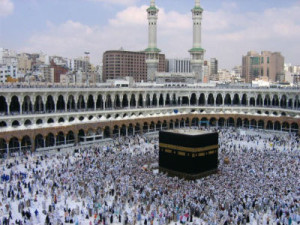
Al-Masjid Al-Haram or simply The Grand Mosque or The Sacred Mosque is situated in Mecca City, Saudi Arabia. It is acknowledged as the largest mosque in the world. It surrounds one of the Islam’s holiest sites, the Kaaba. It can accommodate up to two million people. According to Islamic custom the very first assembly of the Kaaba, the center of Al-Masjid Al-Haram, was commenced by Abraham. The Qur’an said that this was the first house constructed for people to worship Allah. With the command of God, Abraham and his son Ishmael rebuilt the Kaaba the moment they found out the original foundation in 2130 BCE. Kaaba is a cuboidal shaped building in the center of Al-Masjid Al-Haram and is one of the most sacred places in Islam.
2. Al Nabawi Mosque, Medina, Saudi Arabia
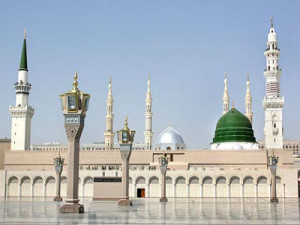
Prophet’s Mosque also known as Al-Masjid al-Nabawi is built by the Islamic Prophet Muhammad. It is located at the radiant city, Medina. It is acknowledge as the second holiest place in Islam. Al-Masjid al-Nabawi is the second mosque built in the history and as well as one of the largest mosques in the world after an expansion during the supremacy of al-Walid. It also unites the location of the last resting place of Muhammad and early Muslim leaders Abu Bakr and Umar. The original mosque was constructed by Muhammad and his confidants next to the house where he settled after his expedition to Medina in 622 CE.
3. Al Aqsa Mosque, Jerusalem, Palestine
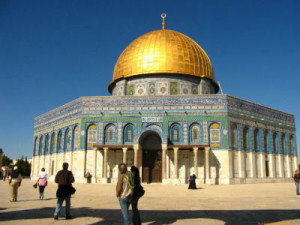
The Farthest Mosque or Al-Aqsa Mosque is also being called as Al-Aqsa and Bayt al-Muqaddas. It is believed to be the third holiest site in Islam. Al-Aqsa Mosque is situated at the Old City of Jerusalem. It was initially a small prayer house built by the Rashindun and was demolished, rebuilt and expanded by caliph Umar Umayyas caliph Abd al Malik and was completed by his son al-Walid in 705 CE. In 746, the mosque was completely destroyed by an earthquake and was rebuilt by the Abbasid caliph al-Mansur. His successor, Ali az-Mahdi rebuilt it again in 780 but another earthquake destroyed Al-Aqsa in 1033. Nevertheless, the Fathimid caliph Ali az-Zahir built another mosque two years later which has stood to present day.
4. Zahir mosque Kedah Malaysia
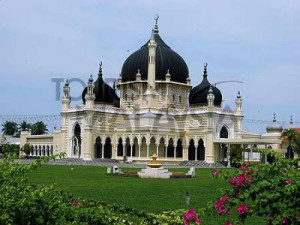
Zahir Mosque is located at the center of the state capital of Kedah, Malasia, Alor Star. It is acknowledged as Kedah’s state mosque. Zahir Mosque is one of the magnificent and oldest mosques in Malaysia. The mosque was built in 1912 as a contributory exertion of YTM Tunku Mahmud IbniAlmarhum Sultan TajuddinMukarram Shah. The location of the mosque was the cemetery of Kedah soldiers who had passed away while protecting Kedah from the Siamese in 1821. It was motivated by the Azizi Mosques which can be found in TanjungPura, Langkat Sultanate. It has five primary domes symbolizing the Islam’s Five Pillars.
5. Sultan Omar Ali Saifuddin Mosque
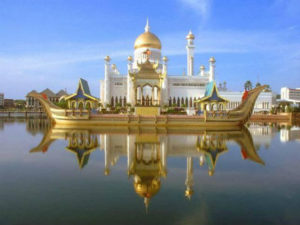
The royal Islamic mosque that is located at the capital of the Sultanate of Brunei, Bandar Seri Begawan is Sultan Omar Ali Saifuddin Mosque. It was named after the 28th Sultan of Brunei; Omar Ali SaiffudienIII.Its construction was completed in 1958. It combines Mughal architecture and Italian features. It was planned by Booty and Edwards Chartered Architect’s and was designed by an Italian architect named CavaliereRudolfoNolli, who had been working for decades at the Gulf of Thailand which is commonly known by Malays as Gulf of Siam. The main dome of the mosque is covered with pure gold and can be seen in almost anywhere in Bandar Seri Begawan.
6. Taj’ul Mosque, Bhopal, India
The crown of mosques also known as Taj-ul-Masajid is located at in Bhopal, India.It is one of the biggest mosque in Asia. The said mosque is also used as an Islamic school or rather madrasah during the day time. It was built by NawabShaJahan Begum of Bhopal during the supremacy of the Mughal Emperor Bahadur Shah Zafar and continued to build by her daughter Sultan Jahan Begum until her last breath. Although the mosque was not completed due to lack of funds and long dismissal after the war of 1857, it was continued in 1971 by Bhopal’s Allama Mohammad Imran Khan NadwiAzhari. The construction was finished by 1985.
7. Baiturrahman Mosque, Banda Aceh, Indonesia
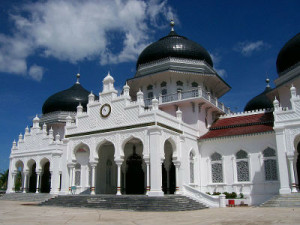
Baiturrahman Grand Mosque also known as Mesjid Raya Baiturrahman can be found in the heart of Banda Aceh City, Aceh Province, Indonesia. An Italian Architect designed the mosques and was built by the Dutch colonial administration as a symbolic of settlement following their demolition of an older mosque throughout the Aceh wars.The construction of the mosque began in 1879 and was completed in 1881. The design was said to be influenced by the combination of colonial and Moghul Indian inspirations. Few are combined traditionally with Achehenese features though it has come to symbolize Banda Aceh and Acehenese distinctiveness. It is of great figurative importance to the Acehnese people as a symbol of Acehnese belief and culture, particularly since it survived the shocking 2004 tsunami intact.
8. Sultan Mosque, Singapore

Sultan Mosque, commonly known as Masjid Sultan was named after Sultan Hussein Shah. The mosque is located somewhere in Ronchor Planning area in Singapore. It was first constructed in 1820 though the original building was destroyed after a century to make way for the existing building. It was completed on 1932. Sultan Mosque was designed by Denis Santry of Swan and Maclaren. It was said to be influenced by the Indo-Saracenic style. It can hold about five thousand worshipers. The mosque holds great importance for the Muslim community that’s why it is recognized as one of the most significant mosques in Singapore. In 1975, it was designated as a National Monument.
9. Faisal Mosque, Islamabad, Pakistan
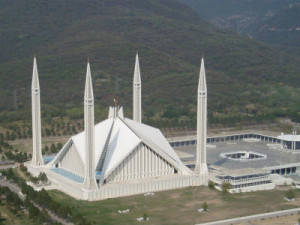
The largest mosque in South East and Southern Asian can be found in Islamabad, Pakistan. It was called Faisal Mosque, named after the king of Saudi Arabia, King Faisal bin Abdul-Aziz. Although it is now the fourth biggest mosque in the world, it was the crowned as the largest mosque in the world from year 1986 up to 1993. The Faisal Mosque can accommodate ten thousand in the main prayer hall, twenty four thousand in its porticoes, forty thousand in its square and another two hundred thousand in it connecting grounds. The Turkish architect who won the Aga Khan Award for Architecture is VedatDalokay.
10. BaitulMukarram Mosque, Dhaka City, Bangladesh
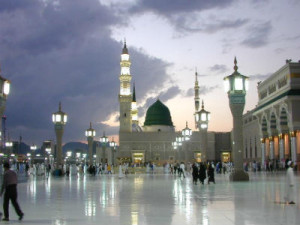
The National Mosque of Bangladesh, BaitulMukarram Mosque, is located at the heart of the capital of the country itself, Dhaka. Architect T Abdul HussainThariani was the one who designed the mosque’s complex. The construction was started on January 27, 1960 and was actually completed on 1968. BaitulMukarram Mosques has a capacity of thirty thousand receiving its 10th position in the largest mosque in the world. On the other hand, the mosque is frequently getting over crowded most especially during the holy month of Ramadan. Because of this, the Bangladeshi government had decided to enlarge it by building extensions increasing its capacity to forty thousand.



